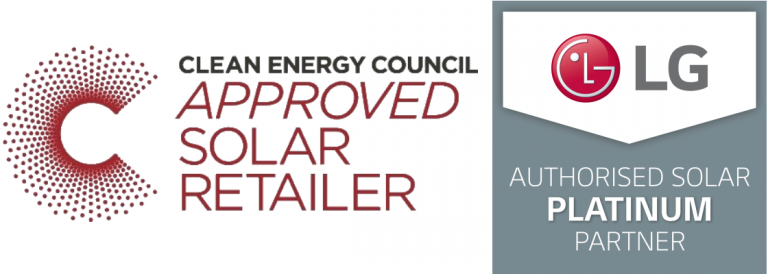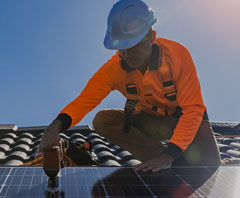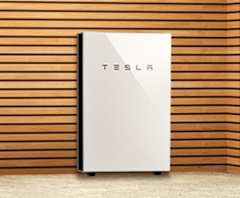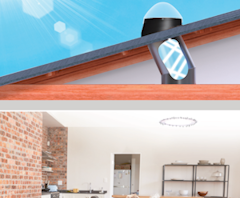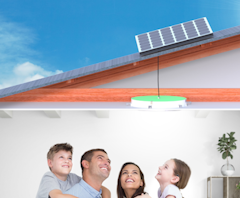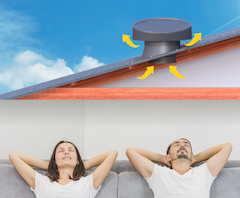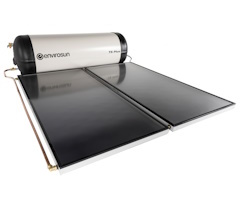With improved high temperature performance, salt corrosion resistance, hail and wind resistance and a country wide LG 25-year product and performance warranty, LG NeON H solar Panels are uniquely suited to Australian climate and conditions.
The Australian environment features harsh conditions with extremes from storms to winter snows to searing summer heat. WithBacked with LG’s stability, the characteristics of the LG NeON H panels make them the ideal choice of solar panels for Australia.
The LG NeON H Panel Is A Safe Choice
There is now way to sugarcoat it – the Australian solar market has been a minefield for Australian consumers. We see old Australian cricket captains on TV pushing solar panel “brands” that no one outside of the solar industry has ever heard of.
The facts are alarming. Since 2013 over 360 panel brands have disappeared from the Australian market, leaving consumers exposed with worthless warranties. In this stormy market LG represents stability with $60 billion in global sales.
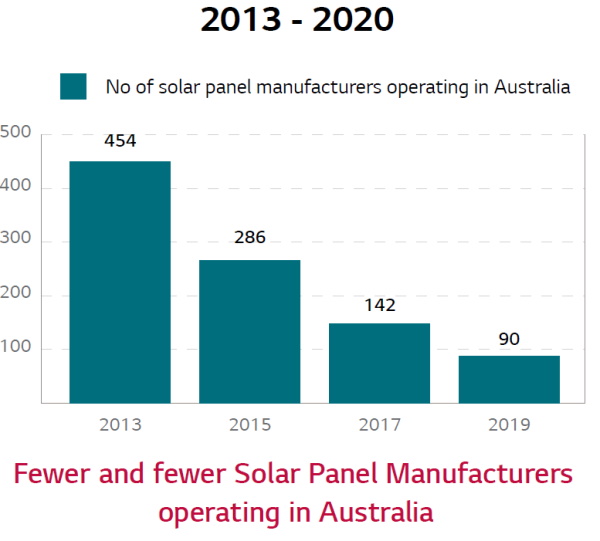
LG are the largest consumer brand operating in solar in Australia and NZ and since 2010 have installed 1.2 million solar panels in this market. The LG NeON H solar panels, backed with the stability of LG are a safe choice for Australian consumers.
Improved High Temperature Performance With The NeON H
We all know Australia is blessed with plenty of sunshine and our summers are hot. One would automatically assume that the sunnier and hotter it gets, the better a solar panel will perform.
Wrong. It is counter intuitive that solar panel performance actually drops as the temperature rises. A sunny day is great for solar energy production, but as the temperature rises all panels lose production capacity. There is a factor called the “temperature coefficient”. This measures the performance of a solar panel as the temperature rises, and the lower the temperature coefficient the better the panel performs in higher temperatures.
To calculate the temperature coefficient, the solar panel output is measured in the laboratory beginning at the industry standard testing temperature of 25°C. The temperature is then raised and the reduction in power output is measured to calculate the temperature coefficient.
This is an important characteristic to consider when selecting a solar panel for your system. With hot Australian summers, roof temperatures in the suburbs can soar to over 65°C.
Compared to standard modules, the improved temperature coefficient of the LG Neon H means that in hot Australian summers the NeON H will deliver higher output, meaning increased savings for the customer over the life of the system.
Salt Mist Corrosion Resistance
GeoScience Australia estimates that over 80% of Australians live in what is called the coastal zone, and it is estimated that 6% of all Australian addresses, around 700,000 residences, are located within 6km of the coast.
Salt mist is created by the interaction action of surf swell and wind and can be carried inland on the breeze. For solar system longevity in the Australian coastal environment, it is very important to take into consideration the corrosion resistance of the solar panels for their ability to withstand harsh coastal conditions.
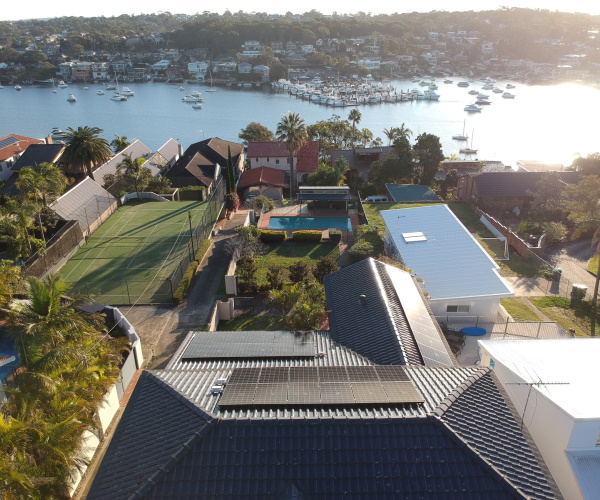
The LG NeON H panels are rated for Salt Mist Corrosion under international standard IEC 61701 to severity 6 (the highest), and have they also passed the Ammonia Corrosion Test under IEC 62719 2013.
This means the LG NeON H panels are a confident choice for installation by Australian customers living in coastal areas and other harsh environments.
LG NeON H Hail Resistance
The Insurance Council of Australia warns that “As Australia warms, we can expect more frequent extreme natural hazard events; more bushfires, floods, hailstorms and cyclones.”
When choosing solar panels, smart consumers will consider there is a chance that their solar system may be subject to impact by hailstones during its life, and the hail resistance of the solar panel needs to be considered.
The testing standards for solar panel hail resistance under the IEC 61215-2:2016Ed2 standard, subjects the panels to testing with ice balls of 25mm diameter launched at the panel with a speed of 23 metres per second.
In testing the hail resistance of the LG NeON H range, LG tested the panels with larger 35mm diameter hailstones hitting the panels at a faster speed of 27.7m/sec.
This testing shows that the significantly stronger NeON H solar panels are the smart choice for Australian conditions by withstanding larger hailstones than standard panels.
High Wind Load Rating
With southerly busters, wild east coast lows, and strong winds associated with low pressure systems moving across the continent, windy conditions are a part of the Australian environment.
This means resistance to wind loading is another important factor that consumers need to consider when choosing solar panels.
The robust NeON H panels are manufactured with strong double walled frames. Under load testing the panels withstood a rear wind loading of 4000Pascals. Some other panel brands are only rated to a rear loading of just 2400 Pascals.
Combined with the front load rating of 5400 Pascals the lead ratings mean the LG NeON H will handle windy Australian conditions.
25-Year Product And Performance Warranty
Australia is a big country. It does not matter whether your panels are installed in the city, a regional centre or the bush, LG has you covered with a leading 25-year parts and labour product warranty and performance warranty on the LG NeON H panels.
All solar panels approved by the Clean Energy Council must have a 25-year performance warranty. The performance warranty just warrants the power output of panels. As all panels degrade overtime, after 25-years the output of cheaper panels can decrease by almost 20%.
LG warrant the NeON H panel output at 90.6% after 25-years meaning over its lifetime it will generate more power than cheaper panels, increasing the savings and return for the customer.
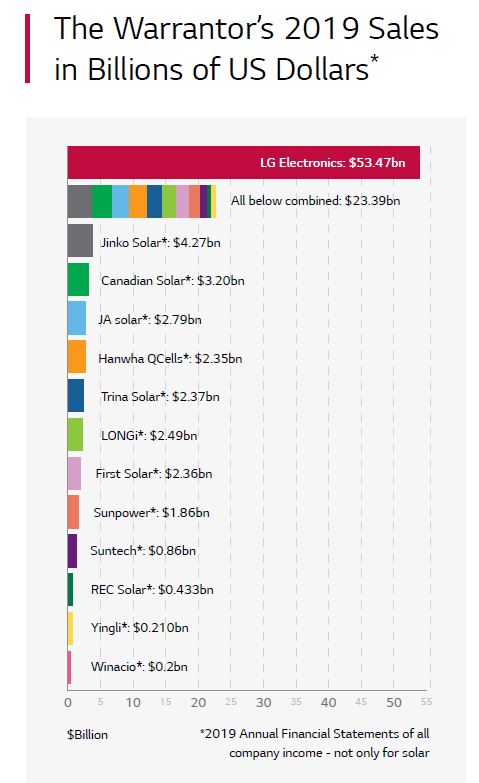
When the advertisements for cheaper panels boast “25-year Warranty” they mean the performance warranty. They do not boast about the important product warranty covering the panels, which for cheap panels is only 10 or 12-years. This is only how long they are confident the panel itself will last.
(For a look at the risks of cheap solar see our blog on this topic.)
Most panel brands only have very limited or no official corporate presence in Australia. They rely on the solar installer to cover the warranty obligations. Since 2011 over 700 solar installers have gone out of business, so this a high-risk option for consumers and an important consideration when selecting solar panels suitable for the Australian environment.
With a 25-year product and performance warranty backed by LG, the NeON H solar panel is a safe and smart choice for Australian families and businesses considering solar.
***
These superior characteristics of the LG NeON H solar panel range, combined with the backing of a leading 25-year product warranty and the stability of LG, make the LG NeON H solar panels ideally suited for the for the Australian environment and a superior choice Australian consumers.
Contact SolarBright today for an obligation free, customised LG Solar Proposal that will suit the specific requirements of your home or business.
SolarBright is one of the largest LG solar panel installers in Sydney and NSW, an LG Solar Authorised Platinum Partner and a CEC Approved Solar Retailer.
